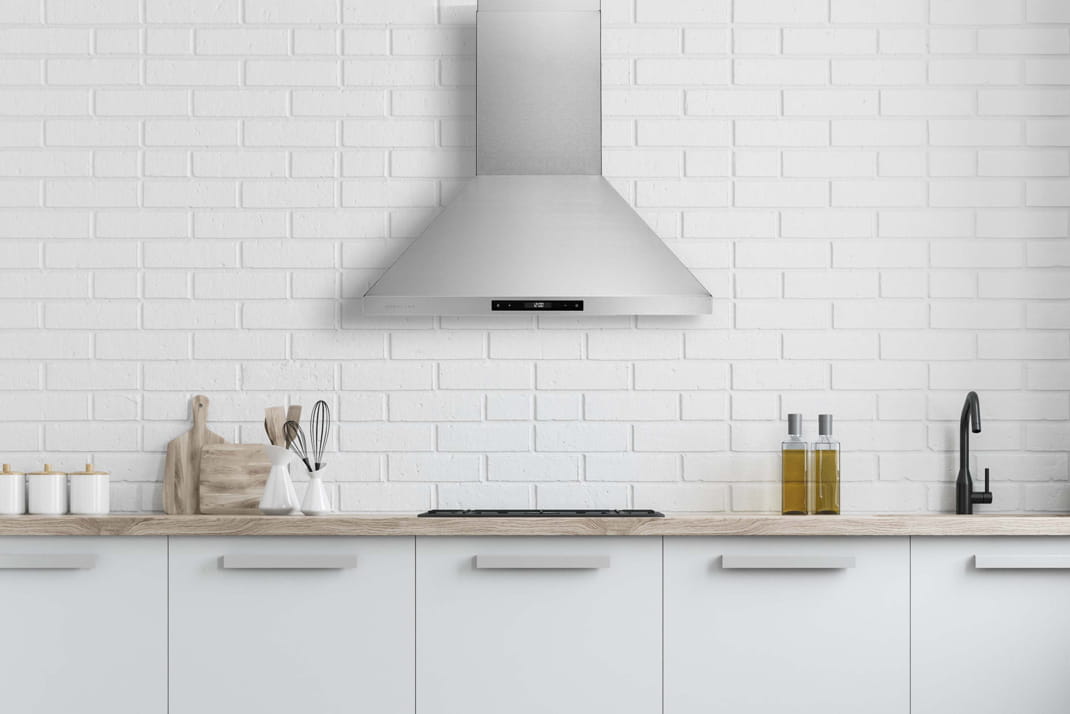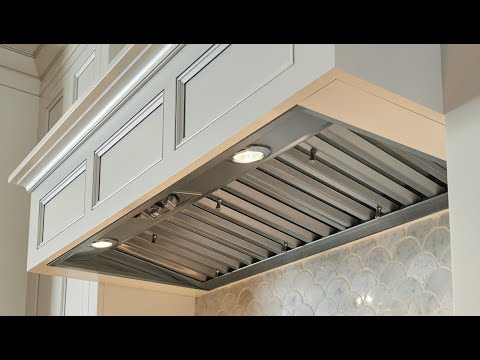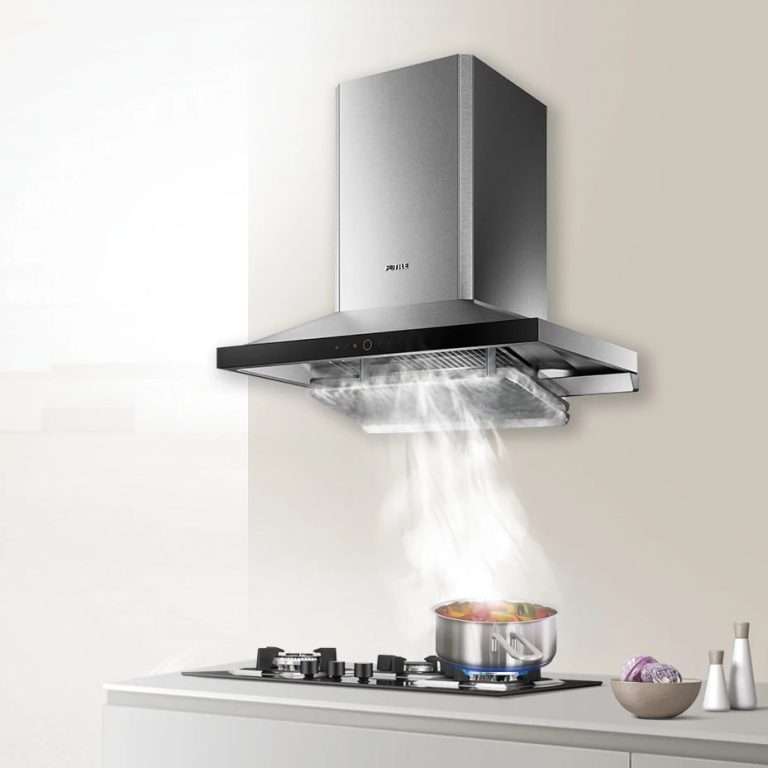For a gas stove, a range hood should provide between 300 to 600 CFM (cubic feet per minute) for optimal performance. The exact CFM needed depends on your cooking habits and kitchen size.
Choosing the right CFM for your range hood is crucial for effective ventilation and a healthy cooking environment. Gas stoves produce smoke, grease, and odors that can linger in your kitchen. A properly sized range hood helps eliminate these pollutants, ensuring a clean and comfortable space.
Factors like the stove’s BTU output and the size of your kitchen influence CFM requirements. Understanding these elements enables you to select a range hood that not only complements your kitchen design but also improves air quality. Prioritize your cooking style and kitchen layout for the best results.

Credit: us.fotileglobal.com
Importance Of Proper Ventilation
Proper ventilation is crucial for a safe kitchen. Inadequate airflow can lead to serious risks. It may cause excessive heat, which can damage appliances. Poor air quality can also lead to health issues like headaches and allergies.
Effective exhaust systems offer many benefits. They help remove smoke, steam, and odors quickly. This keeps the kitchen clean and fresh. A good range hood can improve overall air quality. It reduces the risk of fire hazards by eliminating flammable particles. A well-ventilated space enhances cooking experiences and creates a safer environment.
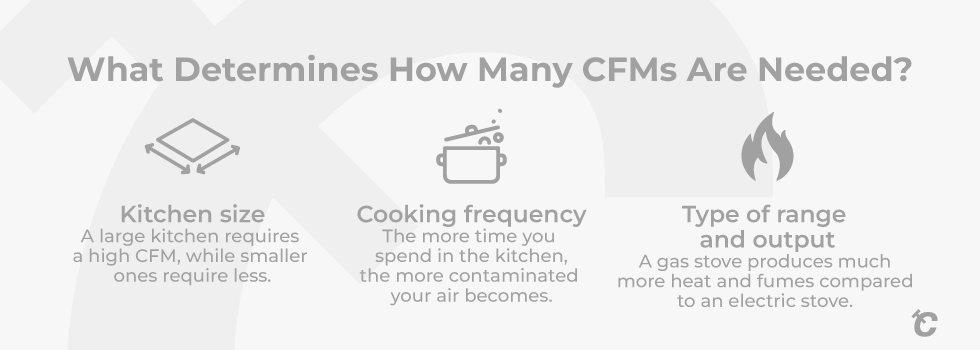
Credit: www.worldcoppersmith.com
Understanding Cfm Ratings
CFM stands for cubic feet per minute. It measures the airflow of a range hood. Higher CFM means better ventilation. This is crucial for gas stoves.
Choosing the right CFM depends on your cooking habits. For light cooking, 200-300 CFM may suffice. For heavy cooking, aim for 600-900 CFM. Consider the size of your kitchen and the stove.
| Cooking Style | Recommended CFM |
|---|---|
| Light Cooking | 200-300 CFM |
| Medium Cooking | 400-600 CFM |
| Heavy Cooking | 600-900 CFM |
Calculating Cfm For Gas Stoves
Calculating the CFM needed for a range hood is important. CFM stands for cubic feet per minute. It measures the air flow of your hood.
Several factors affect the CFM required for your gas stove:
- Stove BTUs: Higher BTUs mean more CFM.
- Kitchen Size: Larger kitchens may need higher CFM.
- Cooking Style: Frequent frying or grilling requires more air flow.
Follow this step-by-step guide to calculate the CFM:
- Find the total BTUs of your gas stove.
- Multiply the BTUs by 0.01.
- Use the result to determine the CFM needed.
This simple method ensures your kitchen stays fresh and safe. Proper ventilation is key for a healthy cooking environment.
Types Of Range Hoods
Range hoods come in two main types: ducted and ductless. Each type serves a different purpose.
Ducted solutions vent air outside. They are great for removing smoke and odors. These systems use ductwork to connect to the outside. This option is usually more powerful and effective.
Ductless options filter the air and recirculate it back into the kitchen. They use charcoal filters to trap smells and grease. This type is easier to install and does not require ductwork.
Choosing between these types depends on your kitchen setup and needs. Both options can improve air quality and cooking experience.
Installation Tips For Maximum Efficiency
Proper placement of your range hood is key for maximum efficiency. Install it between 24 to 30 inches above the cooking surface. This height captures the smoke and odors effectively. Make sure the hood is centered above the stove for the best results.
Avoid common mistakes during installation. Do not install the hood too high; it won’t work well. Also, ensure the ducting is straight and short. This helps maintain strong airflow. Check for any obstructions that may block the airflow.
| Common Mistakes | Solutions |
|---|---|
| Hood installed too high | Keep it between 24-30 inches |
| Ducts are too long | Use short, straight ducts |
| Obstructions in the path | Clear any blockages |
Maintaining Your Range Hood
Regular cleaning of your range hood keeps it working well. Clean the exterior and filters to prevent grease build-up. Use warm soapy water for the outside. For the filters, check the manufacturer’s instructions. Soak them in a solution of vinegar and water for best results.
Replace filters when they are damaged or too dirty. Signs of a worn-out filter include a reduced airflow and visible grease. Always have spare filters on hand for quick replacements. This ensures your range hood functions effectively and maintains proper airflow.
Regulations And Building Codes
Local building codes often set the minimum CFM for range hoods. This ensures proper ventilation. Each area may have different requirements based on local regulations.
For gas stoves, a common recommendation is about 100 CFM for every 12 inches of cooktop width. Some areas might require more for safety.
| Location | Recommended CFM |
|---|---|
| California | 300 CFM |
| New York | 150 CFM |
| Texas | 200 CFM |
Always check with your local authorities. This helps to ensure you meet all safety standards.
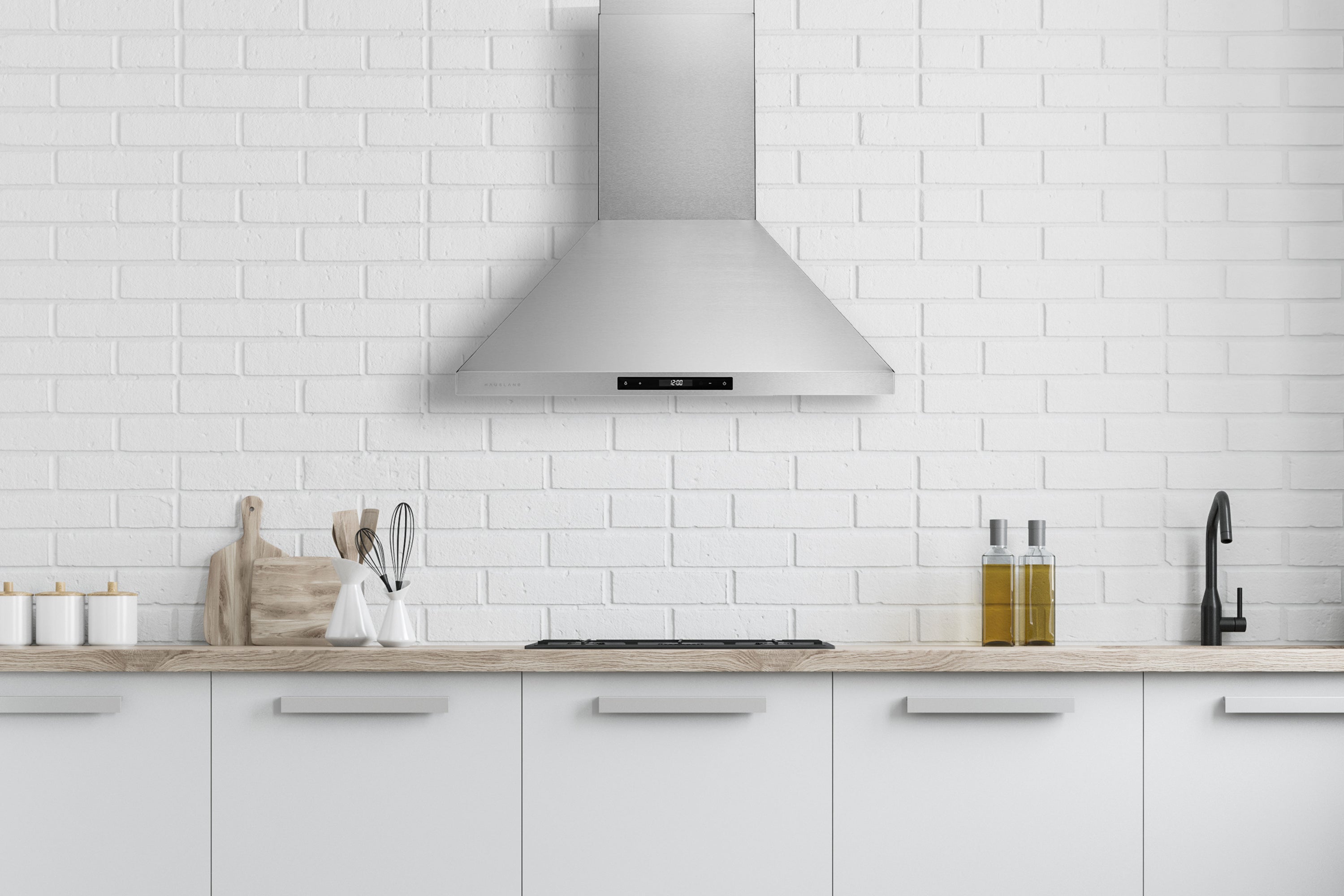
Credit: hauslane.com
Advanced Features In Modern Range Hoods
Modern range hoods often come with smart technology. This feature allows users to control settings via a smartphone app. It also offers voice control through smart home devices. Such advancements make cooking easier and more efficient.
Energy efficiency is another key aspect of today’s range hoods. Many models use LED lights to save energy. They also have high-efficiency motors that reduce power consumption. These features help save money on electricity bills.
Some range hoods even offer air quality sensors. These sensors detect smoke or odors and adjust the fan speed automatically. This ensures a safer cooking environment.
Faqs About Cfm And Range Hoods
Many people wonder about the CFM needed for a range hood above a gas stove. CFM stands for Cubic Feet per Minute. It measures how much air the hood can move. A higher CFM means better air flow. For gas stoves, a CFM of 300 to 600 is usually recommended.
Some may ask about the size of the range hood. A hood should be at least as wide as the stove. This ensures proper coverage and air capture. Other concerns include noise levels. A high CFM hood can be louder. Look for a quiet model if noise is a concern.
Finally, consider the installation height. The hood should be 24 to 30 inches above the stove. This height allows for effective ventilation. Always check local codes for specific requirements.
Frequently Asked Questions
How Do I Calculate Cfm For A Range Hood?
To calculate the required CFM for your range hood, consider your stove’s BTU rating. A general rule is to divide the total BTUs by 100. This gives you the minimum CFM needed for effective ventilation. Ensure your range hood matches or exceeds this value for optimal performance.
What Is The Ideal Cfm For Gas Stoves?
The ideal CFM for gas stoves typically ranges from 300 to 600. This depends on the stove’s size and BTU output. Larger stoves with higher BTUs may require more CFM. Always choose a range hood that can effectively handle your cooking needs and prevent smoke buildup.
Can I Use A Range Hood With Low Cfm?
Using a range hood with low CFM may not effectively remove smoke or odors. If the CFM is too low, it can lead to poor air quality. It’s essential to select a hood that meets the CFM requirements based on your stove’s BTU rating for optimal performance.
What Happens If Cfm Is Too High?
If the CFM is too high for your range hood, it can create excessive noise and energy consumption. High airflow can also lead to unwanted drafts in your kitchen. It’s crucial to find a balance between adequate ventilation and comfort to enhance your cooking experience.
Conclusion
Choosing the right CFM for your range hood is essential for an efficient kitchen. A proper CFM rating ensures effective smoke and odor removal. Consider your stove’s BTU output and kitchen size when making your decision. Invest wisely in your range hood for a healthier cooking environment and enhanced kitchen experience.
